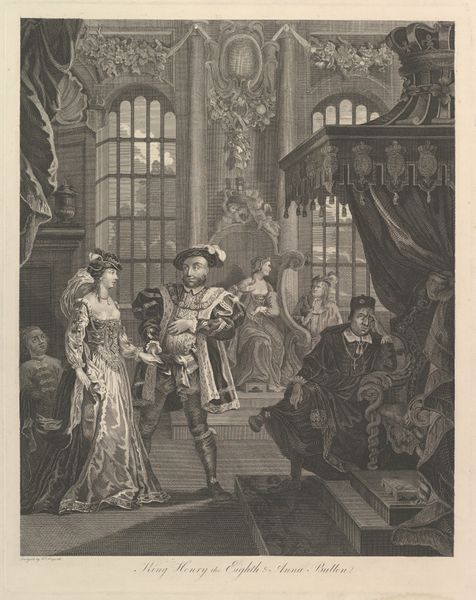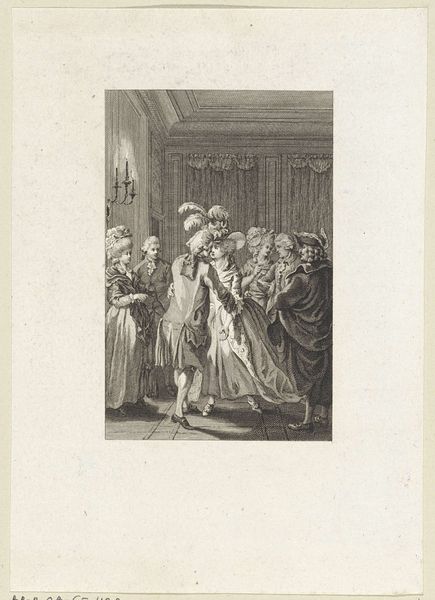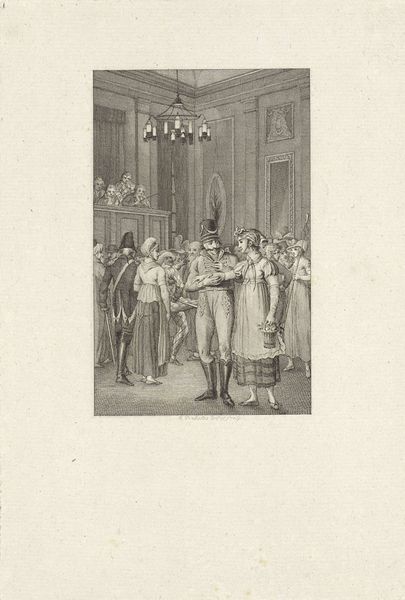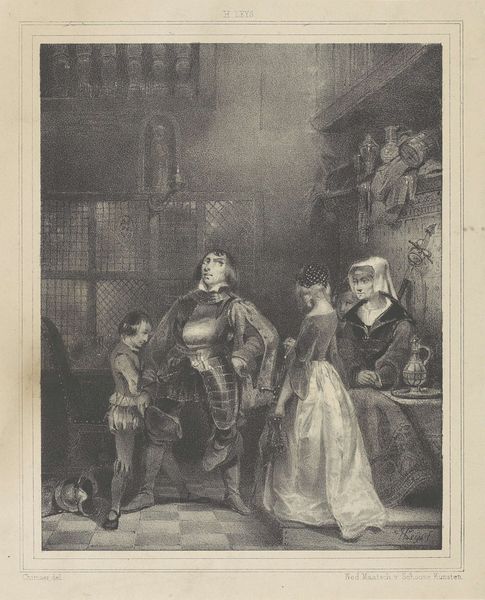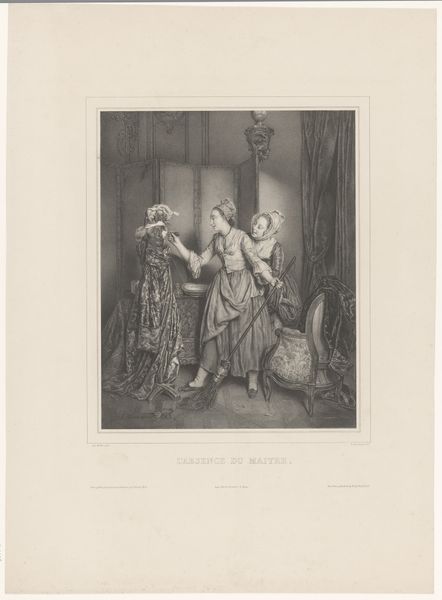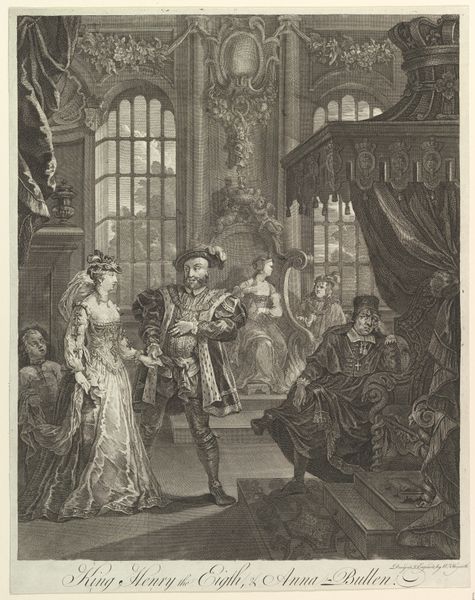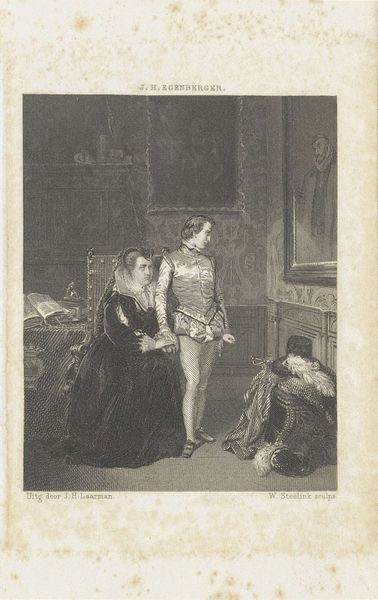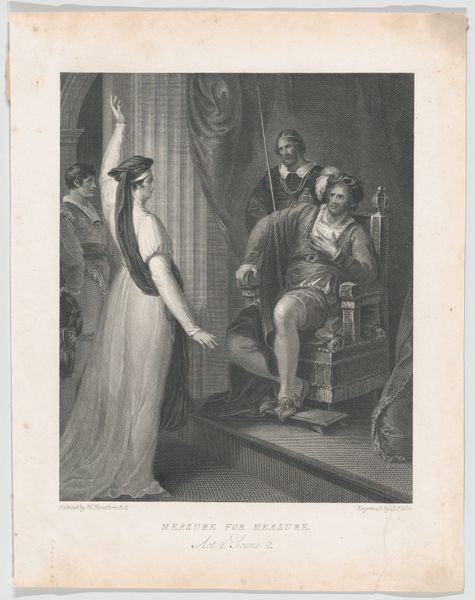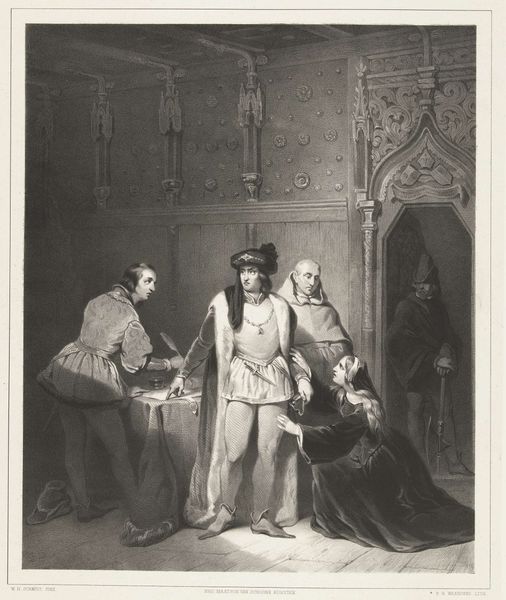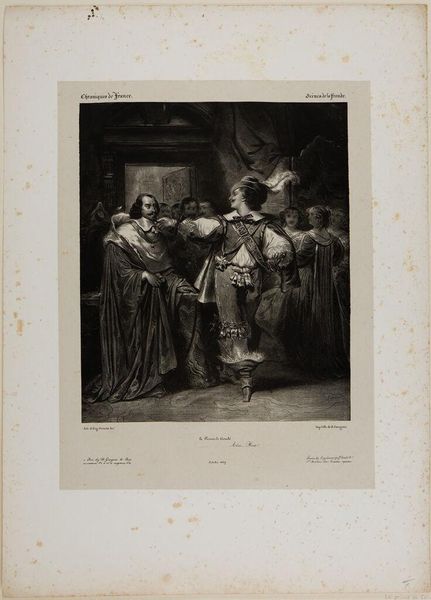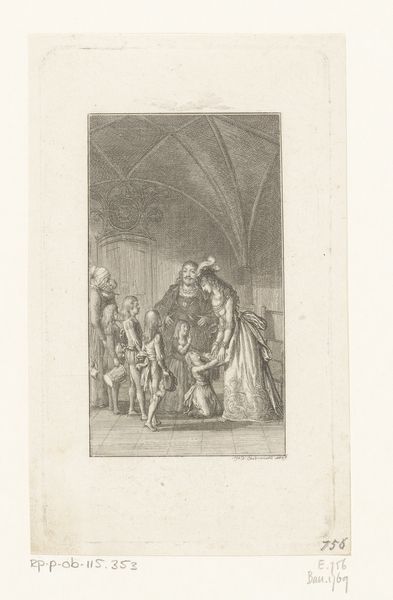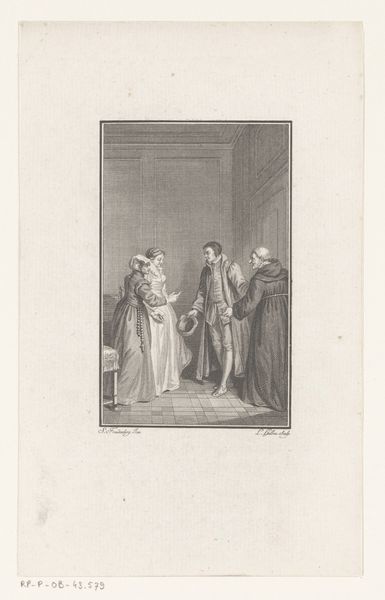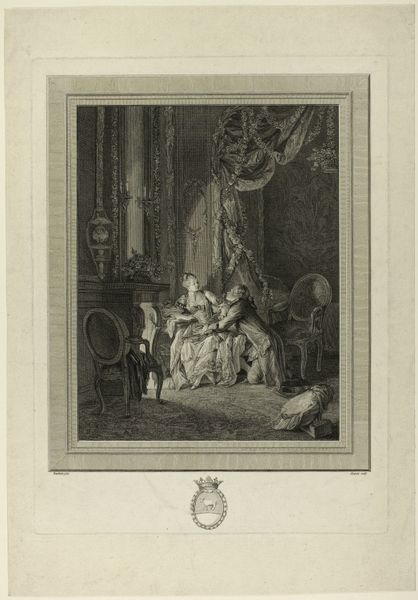
print, engraving
#
portrait
#
print photography
# print
#
11_renaissance
#
history-painting
#
engraving
#
realism
Dimensions: height 778 mm, width 511 mm
Copyright: Rijks Museum: Open Domain
Curator: Welcome. We’re standing before François Forster's engraving, dating sometime between 1812 and 1872, entitled "François I en Karel V bezoeken de kerk van Saint-Denis" depicting Francis I and Charles V visiting the church of Saint-Denis. Editor: It’s rather dark, isn’t it? All grays and blacks, almost claustrophobic despite the implied grand scale of the architecture. A feeling of hushed observation pervades the scene. Curator: Considering the probable means of production of this print – engraving as a technique – one must appreciate the amount of physical labor and artisanal skill invested. Engraving involves manually cutting lines into a metal plate, and its material endurance allows for reproduction and dissemination of this historical moment for broad consumption. Editor: Indeed, the meticulous detail achieved through engraving certainly creates depth and texture. Notice the intricate patterns on the clothing and the architectural elements; a testament to Forster’s command over the medium. Semiotically, the contrast between light and shadow amplifies the formality of the encounter. Curator: More than a formal encounter, though! Context is paramount here. Saint-Denis, traditionally the burial place of French royalty… The presence of Francis and Charles here suggests diplomatic tension, perhaps a forced visit? Think about the labor required to maintain the legacy embodied by the location! Editor: Certainly. The very space echoes with the weight of history, underlining themes of power and legacy. I’d add that visually, Forster’s choices are precise; observe how the eye is drawn along diagonals formed by the bodies and columns. The print offers viewers a stage with an exact vanishing point. Curator: Exactly. That dramatic effect also highlights the function of reproductive printmaking in crafting narratives about leaders. Disseminated via print, those notions and symbols were widely available to reinforce notions of hierarchy, and legacy as crafted through patronage. Editor: Ultimately, analyzing "François I en Karel V bezoeken de kerk van Saint-Denis" as Forster’s balanced orchestration of line and form, creates both visual interest and underscores meaning. Curator: For me, looking at this work from a historical point of view illuminates the intersections of power, production, and social consumption, far beyond mere representational purposes. I see an illustration of power structures being constructed and reproduced.
Comments
No comments
Be the first to comment and join the conversation on the ultimate creative platform.
